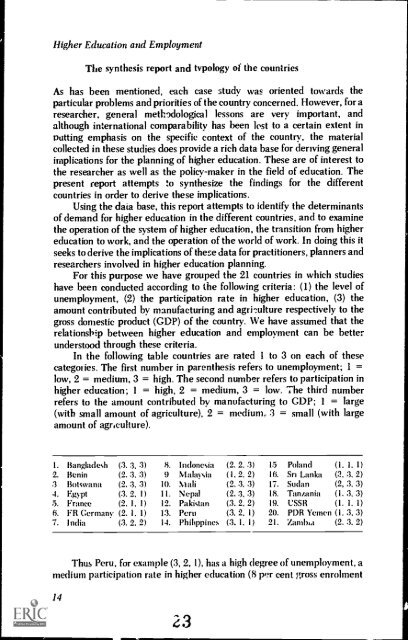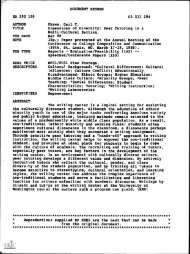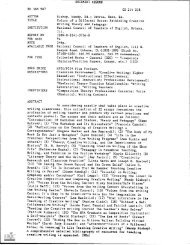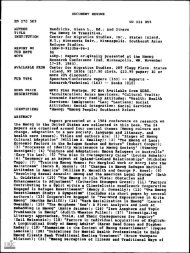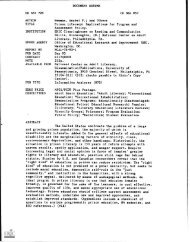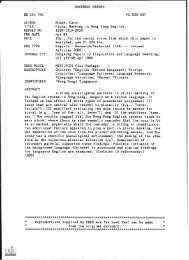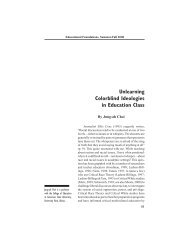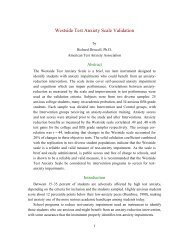Higher Education and Employment: An International Comparative ...
Higher Education and Employment: An International Comparative ...
Higher Education and Employment: An International Comparative ...
Create successful ePaper yourself
Turn your PDF publications into a flip-book with our unique Google optimized e-Paper software.
<strong>Higher</strong> <strong>Education</strong> <strong>and</strong> <strong>Employment</strong>The synthesis report <strong>and</strong> typology of the countriesAs has been mentioned, each case study was oriented towards theparticular problems <strong>and</strong> priorities of the country concerned. However, for aresearcher, general methodological lessons are very important, <strong>and</strong>although international comparability has been lest to a certain extent inPutting emphasis on the specific context of the country, the materialcollected in these studies does provide a rich data base for deriving generalimplications for the planning of higher education. These are of interest tothe researcher as well as the policy-maker in the field of education. Thepresent report attempts to synthesize the findings for the differentcountries in order to derive these implications.Using the Baia base, this report attempts to identify the determinantsof dem<strong>and</strong> for higher education in the different countries, <strong>and</strong> to examinethe operation of the system of higher education, the transition from highereducation to work, <strong>and</strong> the operation of the world of work. In doing this itseeks to derive the implications of these data for practitioners, planners <strong>and</strong>researchers involved in higher education planning.For this purpose we have grouped the 21 countries in which studieshave been conducted according to the following criteria: (1) the level ofunemployment, (2) the participation rate in higher education, (3) theamount contributed by manufacturing <strong>and</strong> agriculture respectively to thegross domestic product (GDP) of the country. We have assumed that therelationship between higher education <strong>and</strong> employment can be betterunderstood through these criteria.In the following table countries are rated 1 to 3 on each of thesecategories. The first number in parenthesis refers to unemployment; I =low, 2 = medium, 3 = high. The second number refers to participation inhigher education; 1 = high, 2 = medium, 3 = low. The third numberrefers to the amount contributed by manufacturing to GDP; 1 = large(with small amount of agriculture), 2 = medium, 3 = small (with largeamount of agriculture).1. Bangladesh (3. :3, 3) 8. Indonesia (2. 2..3) 15 Pol<strong>and</strong> (I. 1. I)2. Benin (2.3. :3) 9 Malaysia (1.2. 2) 16. Sri Lanka (3. :3. 2).3 Botswana (2. 3. 3) 10. Mali (2. 3. 3) 17. Sudan (2, 3. 3)4. Egypt (3. 2. I) 11. Nepal (2. :3. 3) 18. Tantania (1. 3. 3)5. France (2. I. I) 12. Pakistan (3. 2. 2) 19. USSR (1. 1. 1)6. FR Germany (2. 1. 1) 13. Peru (3. 2. 1) 20. PDR Yemen (1. 3. 3)7. India (3. 2. 2) 14. Philippines (3. I. 1) 21. Zambia (2. 3. 2)Thus Peru, for example (3, 2, I), has a high degree of unemployment, amedium participation rate in higher education (8 per cent gross enrolment1423


